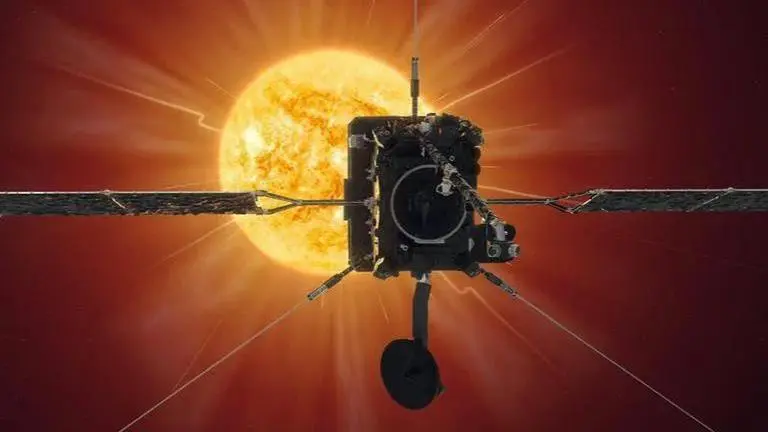Updated 4 September 2022 at 16:03 IST
ESA's orbiter completes another close Venus flyby to get detailed coverage of Sun's poles
ESA's Solar Orbiter got as close as 6,420 km from the surface of Venus at 6:56 am IST in order to adjust its orbit around the sun.
- Science News
- 2 min read

The European Space Agency’s (ESA) Solar Orbiter made another close approach to planet Venus as it continues to study the Sun. ESA revealed that the orbiter got as close as 6,420 km from the surface of Venus at 6:56 am IST in order to adjust its orbit around the Sun. The spacecraft has been launched to study the polar regions of the Sun and that would be possible if the orbiter flies in an inclined orbiter.
According to ESA, further gravity assist flybys including the recent one would boost the orbiter’s inclination and offer a better view of the sun’s polar regions.
🛰🟠⤴️ Happening now! #SolarOrbiter is making a #VenusFlyby at a distance of about 6420 km to adjust its orbit around the #Sun. Further gravity assist flybys will boost its inclination to get better coverage of the Sun’s polar regions. #WeAreAllSolarOrbiters #ExploreFarther pic.twitter.com/Jo7u9NpWr5
— ESA's Solar Orbiter (@ESASolarOrbiter) September 4, 2022
How would Venus help in observing the Sun?
ESA has explained that the orbiter will get a clear view of the Sun’s poles from an inclined orbit and this inclined orbit can be achieved by harnessing the gravity of Venus. Designed to be in resonance with the planet, the orbiter will reach an inclination of 18 degrees by early 2025 by altering its orbit after every flyby.
“Over the next five to six years as we periodically approach the Sun every five to six months, we will gradually incline our orbit to see the polar regions,” ESA Solar Orbiter Project Scientist Daniel Müller.
The solar orbiter circles the Sun every five to six months as it is in an elliptical orbit and its perihelion, the point in each orbit closest to the Sun, shifts gradually closer with each pass. The reason why ESA wants to study the poles is that they are key to understanding the Sun’s magnetic field that drives the space weather. Through the orbiter, scientists also seek to answer how the Sun produces the solar wind, a stream of electrically charged particles whose effects can be felt throughout the solar system.
Advertisement
It is evident that the Sun’s poles switch places, meaning the north pole becomes south and vice-versa, every 11 years and is the cause of its solar cycles and the resulting sunspots. The orbiter, with its six remote-sensing instruments and four sets of in-situ instruments, would also answer what triggers this phenomenon that births spots on the Sun.
Published By : Harsh Vardhan
Published On: 4 September 2022 at 15:46 IST
